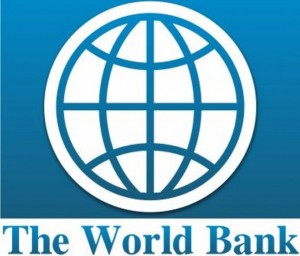Poverty will remain in double digits in sub-Saharan Africa by 2030 – World Bank Group
 Despite the fact that the global poverty rate is on the decline and fewer people are living in extreme poverty around the world, the decline in poverty rates is slow, stemming mainly from an increasing concentration of extreme poverty in regions, particularly sub-Saharan Africa, where poverty reduction has lagged – raising concerns about achieving the goal of ending poverty by 2030.
Despite the fact that the global poverty rate is on the decline and fewer people are living in extreme poverty around the world, the decline in poverty rates is slow, stemming mainly from an increasing concentration of extreme poverty in regions, particularly sub-Saharan Africa, where poverty reduction has lagged – raising concerns about achieving the goal of ending poverty by 2030.
The World Bank noted that, with the increasing concentration, poverty will remain in double digits by 2030 in sharp contrast to the world’s goal of ending global poverty by the year 2030.
”Poverty rate fell to new low of 10 per cent in 2015, but the goal of ending poverty by 2030 is at risk”, it says
Around 41 per cent of people in sub-Saharan Africa presently live below the International Poverty line of $1.9 per person per day, the World Bank says.
The World Bank’s findings are in line with a recent report released by the Overseas Development Institute (ODI) on financing extreme poverty, in which it says the world is not on track to end extreme poverty by 2030 as 29 countries, with about 26 of them in sub-Saharan Africa, are unable to even raise half the investment needed in health, education and social protection.
Nigeria and Ethiopia though not included in the 26 countries with high poverty rate, the World Bank notes that they also have high numbers of their people living in poverty.
Currently, ODI estimates that there exists a $125 billion funding gap annually for these 29 countries if they are to end extreme poverty. According to the ODI, poverty rate in these 29 countries is predicted to be seven times higher yet they currently receive ten times less in aid.
The World Bank says the study points to the need for more pro-poor investments.
Two regions, East Asia and Pacific and Europe and Central Asia, the Banks says, have reduced extreme poverty to below 3 per cent.
“The Middle East and North Africa region had previously been below 3 per cent in 2013, but conflict in Syria and Yemen raised its poverty rate in 2015,” the Bank added.
The World Bank’s preliminary forecast is that extreme poverty in 2018 should be around 8.6 per cent, a drop of 1.4 per cent from 2015. The Bank says if that is achieved, it means that the World Bank’s 2020 interim target of reducing extreme poverty to below 9 per cent has already been achieved.
By Bismark Elorm Addo
Copyright ©2018 by Creative Imaginations Publicity
All rights reserved. This article or any portion thereof may not be reproduced or used in any manner whatsoever without the express written permission of the publisher except for the use of brief quotations in reviews.
